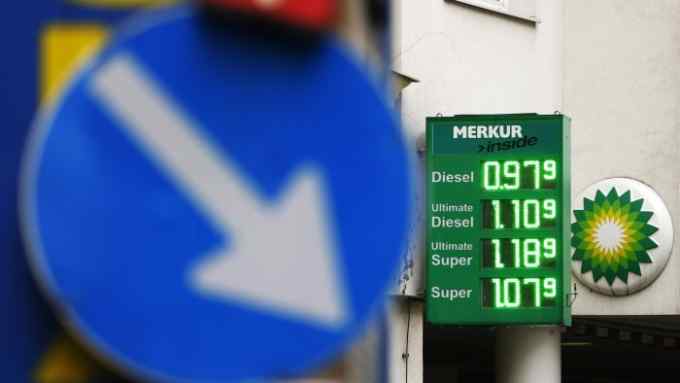Kenya shows renewables scope to plug Africa’s power supply gaps

Roula Khalaf, Editor of the FT, selects her favourite stories in this weekly newsletter.
Most visitors to Hell’s Gate national park, 75km north-west of the Kenyan capital Nairobi, go there to see the wildlife and rock formations. But they usually leave with an additional memory: the intense geothermal activity after which the park is named.
The Kenyan government has been harnessing this clean energy source for decades. Kenya Electricity Generating Company, the government-controlled company that produces about 75 per cent of the country’s power, reckons that 47 per cent of Kenya’s energy consumption is from geothermal. Hydro accounts for 39 per cent, conventional coal, gas and oil-fired generators 13 per cent and wind 1 per cent.
Few countries in sub-Saharan Africa are as lucky as Kenya to have such a large supply of reliable clean energy. The challenge facing not only east Africa’s dominant economy but the whole continent is the extent to which it can drive its economic development through producing clean energy.
The demand is massive. More than 640m Africans, almost two-thirds of the continent’s population, have no access to electricity, according to the African Development Bank. It estimates that per capita annual power consumption in sub-Saharan Africa is 181 kilowatt hours, compared with 6,500 kWh in Europe and double that in the US.
The AfDB reckons the cost of meeting its target of universal electricity access by 2025 is $60bn a year.
Christian Wright, the head of east Africa business development at Globeleq, which develops and operates power plants across the continent, says the skies above African cities are unlikely to become as polluted as their Asian counterparts.
“Ten years ago my answer would have been yes — they would have to rely on fossil fuels,” he says. “Now it’s different.”
This is because while most governments still prioritise affordability, renewables are becoming more competitive on cost of supply.
Mr Wright cites the fall in solar generating costs in Kenya by 30 per cent in the past 18 months, to about 8 US cents per kWh. This compares with 11 or 12 US cents for coal and up to 20 US cents for heavy fuel oil that is used when demand spikes.
Generating clean power is, however, only part of the battle. Transmission and distribution are also challenges. The AfDB wants to create 130m new connections to the grid by 2025 but reckons 75m connections to power off the grid will be needed to meet its universal access goal.
Jesse Moore, chief executive of M-Kopa, one of sub-Saharan Africa’s leading providers of off-grid, pay-as-you-go solar power systems, reckons half of all homes in sub-Saharan Africa will end up with off-grid renewable energy solutions.
“That's not because it’s better for the planet but because it’s far more cost-effective,” he says. “The payback for stringing out conventional grid electricity transmission in rural Africa is measured in decades, whereas the payback for household solar power and appliances is measured in months.”

Companies like M-Kopa, which deliver home-based units, have been criticised for their solutions being both expensive and limited to subsistence power rather than productive power.
But Mr Moore believes that will change. “M-Kopa may have started five years ago with lighting, but is now installing over 1,000 solar powered TVs every week, with more and larger appliances on the way.”
Some companies are trying to use renewable energy to marry on-grid and off-grid solutions. PowerGen Renewable Energy has built 45 mini-grids in Kenya and Tanzania serving tens of thousands of people and hopes to connect them to each country’s grid — “to build the future grid from the grid-edge inwards”, explains chief executive Sam Slaughter.
Commercial rollout of such schemes is being stymied, however, by the politics of providing tariff subsidies. While state-owned utilities can keep tariffs to rural communities relatively low through various subsidies, private operators enjoy no such benefits. Mr Slaughter says that until the situation changes, “business as usual will prevail” and sub-Saharan Africa will risk losing out on the chance to develop truly innovative solutions.
Even if the AfDB meets its targets, one area of energy use that is unlikely to change significantly in the vast majority of Africa is cooking fuel. People in the sector say the amount of energy consumed every day by people using wood, charcoal, kerosene and other traditional fuels dwarfs, perhaps by 10 times, that used not only for other domestic purposes but also industrially.
Greg Murray is chief executive of Koko Networks, a company that has just launched in Kenya selling ethanol-fuelled stoves that can be refilled in quantities small enough to be affordable to the “middle 40 per cent of the population”. “People in the largest 40 cities in sub-Saharan Africa spend $20bn [every year] putting energy into food”, he says. “No one’s really going after this and it’s increasingly unsustainable.”
But even if Koko Networks and other initiatives to introduce cleaner fuel succeed in the few markets they operate in, they are unlikely to do more than scratch the surface of what is likely to remain one of Africa’s greatest energy challenges for decades.


Comments